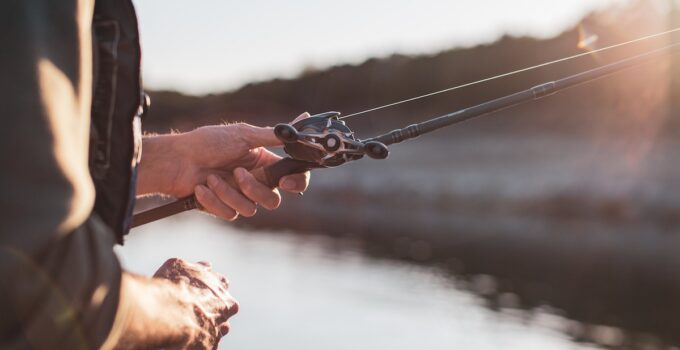Fishing is a timeless pastime that offers a unique blend of relaxation and excitement. Whether you’re casting your line into a serene lake or a rushing river, the thrill of the catch awaits. But for beginners, the world of fishing can seem overwhelming, with a plethora of gear and techniques to learn. Fear not! In this comprehensive guide, we’ll break down the essentials of fishing setup, equipping you with the knowledge to embark on your angling adventure with confidence.
Fishing is more than just a hobby; it’s a connection to nature, an opportunity to unwind, and a chance to savor the satisfaction of a successful catch. However, as a new angler, understanding the basics is crucial. This guide will take you through nine key aspects of the setup, ensuring you’re well-prepared to tackle the waters.
Selecting the Right Fishing Rod
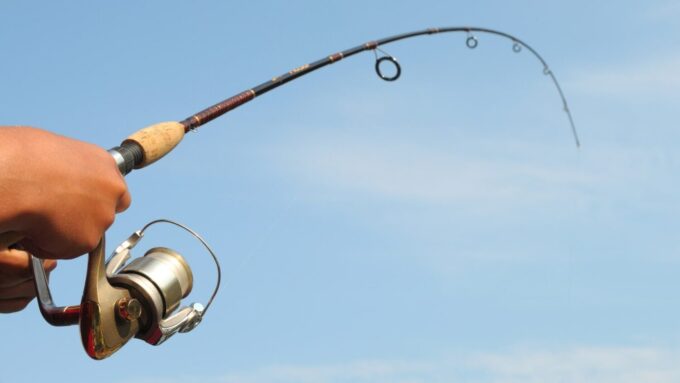
Source: ultimatefisher.com
Your fishing rod is your primary tool, and choosing the right one is paramount. Consider factors like rod length, power, and action. Longer rods cast farther, while shorter ones offer better control in tight spaces. Power determines how much weight your rod can handle, and action relates to how the rod flexes.
There are various types of rods, each designed for specific purposes. Spinning rods are versatile and suitable for beginners. Baitcasting rods offer more control but require practice. Fly rods are for fly fishing enthusiasts, and surf rods are designed for saltwater activities.
Understanding Fishing Reels
Fishing reels are the mechanism that holds and releases the fishing line. They play a vital role in angling. There are three main types of fishing reels: spinning, baitcasting, and spincasting.
Spinning reels are user-friendly and great for beginners. Baitcasting reels offer precision but require skill to use effectively. Spincasting reels are the easiest to operate and are perfect for kids and novices.
Consider the type of fishing you’ll be doing when selecting your fishing equipment. Spinning reels are versatile, while baitcasting reels excel in precision casting.
Choosing the Right Fishing Line
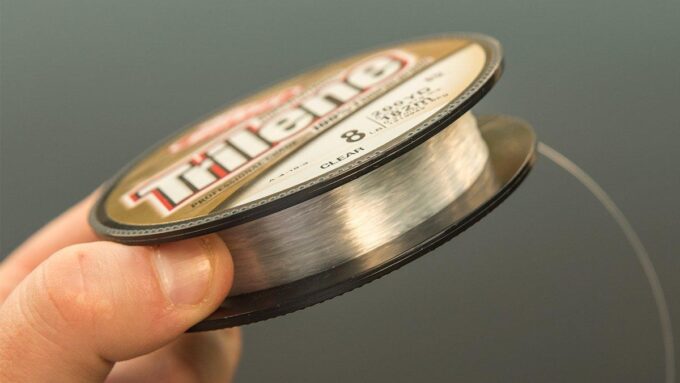
Source: wired2fish.com
Selecting the appropriate fishing line is essential. Monofilament, fluorocarbon, and braided lines are the most common options.
Monofilament lines are affordable and versatile. Fluorocarbon lines are virtually invisible underwater, making them ideal for clear water conditions. Braided lines are strong and have minimal stretch, providing excellent sensitivity.
The choice of line depends on your target species and overall conditions. Match your line to your rod and reel for optimal performance.
Selecting Appropriate Fishing Hooks
Fishing hooks come in various shapes and sizes, each tailored to specific needs. They are categorized by size, with larger numbers indicating smaller hooks. Circle hooks are great for catch-and-release type, while treble hooks are suitable for lures.
Understanding when to use different hook types is essential. Circle hooks reduce the chances of gut-hooking fish, while treble hooks are effective for artificial lures.
Bait and Lures Selection
Choosing the right bait or lures is like selecting the perfect outfit for a special occasion. Your choice can make or break your fishing trip.
Live bait, such as worms and minnows, is irresistible to many fish species. Artificial lures come in various shapes and colors to mimic prey. Research the preferences of your target fish to make the best selection.
Different fish species have distinct tastes. For example, bass are often enticed by soft plastic lures, while trout favor shiny spoons. Experimentation is key to finding the winning combination.
Understanding Knot Tying
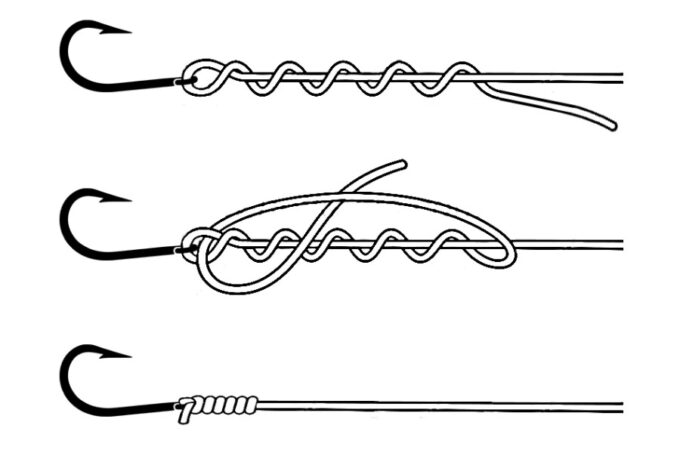
Source: medium.com
Knot tying is a fundamental skill in fishing. A secure knot ensures your hook, lure, or swivel won’t come loose when you hook a fish.
Learn essential knots like the improved clinch knot, palomar knot, and loop knot. Practice tying them until you can do it with your eyes closed.
Setting Up Your Fishing Rig
Setting up your fishing rig is a meticulous process, involving the assembly of various components, including your rod, reel, line, hook, and bait or lure.
To begin, meticulously thread the line through the guides on your rod, ensuring it flows smoothly. Next, securely attach the reel, making sure it’s firmly in place, and carefully spool the line onto the reel, maintaining even tension.
Now, tie the appropriate knot to secure your hook or lure to the end of the line. Selecting the right knot is crucial, as it ensures your bait remains securely attached during your angling adventure.
Lastly, don’t forget to fine-tune the drag setting on your reel to match the type of fish you’re targeting. This adjustment is vital for preventing line breakage when you hook a fish.
Basic Casting Techniques
Casting is where the real magic of fishing unfolds. It’s the pivotal moment when you release your bait or lure into the water, with the hope of enticing a fish to bite.
To become a proficient angler, dedicate time to perfecting the basic casting techniques: overhead cast, sidearm cast, and flipping. Each method varies in terms of power and accuracy, so mastering all three is fundamental for achieving success in different scenarios.
Through practice, you’ll learn to control the trajectory and distance of your casts, allowing you to place your bait precisely where you believe the fish are lurking.
Reeling in Fish and Playing Them
The excitement truly peaks when you feel a fish biting your line. This is the moment when you must employ a smooth, unwavering motion to reel it in.
As the fish takes the bait, maintain a gentle but consistent pull on the line, keeping it taut to prevent any slack that could lead to the fish escaping. Gradually reel in the line while maintaining the tension, ensuring a steady retrieval.
However, the art of playing a fish is equally crucial. Instead of immediately attempting to bring the fish to the surface, allow it to tire itself out. This is achieved by keeping the rod tip up and allowing the fish to make its runs while you maintain a firm grip on the line.
Patience is key during this phase, as rushing can result in the fish breaking free. Once the fish shows signs of fatigue, cautiously bring it closer to the shore or boat. To secure your prize, employ a net to scoop up the fish gently, ensuring a safe and successful catch.
Safety Tips for New Anglers
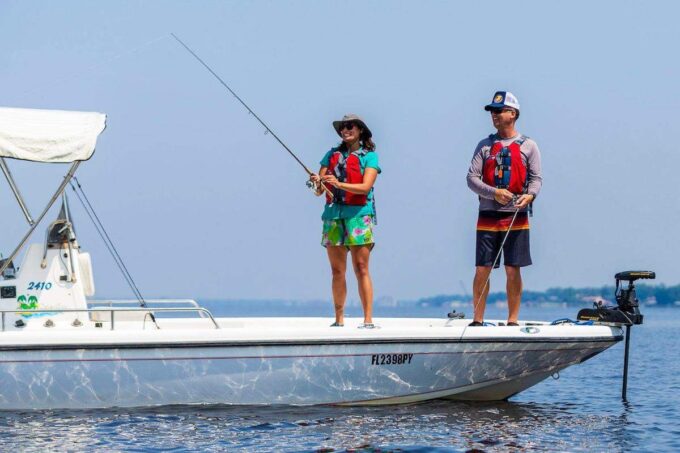
Source: gameandfishmag.com
Safety should always be a top priority. Here are some essential safety precautions for new anglers:
- Wear a life jacket, especially if you’re fishing from a boat.
- Be cautious of slippery rocks and riverbanks.
- Stay hydrated and protect yourself from the sun.
- Respect regulations and catch limits.
- Dispose of trash properly to protect the environment.
Conclusion
In conclusion, fishing is a rewarding pastime that offers a deep connection with nature and the thrill of the catch. By understanding the basics of fishing setup, including choosing the right rod, reel, line, hook, bait, and mastering casting and reeling techniques, you’ll be well on your way to becoming a successful angler.

